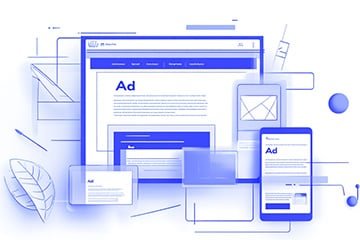In what looks like no time, artificial intelligence has become the main business tool. One of its promising uses is advertising.
AI is likely to improve advertising effectorium and strengthen key metrics, such as the return on advertising and conversion expenditure, and the shoppers are better involved.
Here’s how.
Personalization
In the recent article Harvard Business Review, Academics from Babson College, the University of New Hampshire and the University of South Carolina designed for Howisses, should employ two forms of artificial intelligence for marketing.
The article distinguishes generative AI (Chatgpt, others) from analytical (data analysis) and claims that later helps to predict the behavior and results of the buyer, while Genai is creative.
This AI tool tandem will make personalized reports of AD on individual shoppers or micro-segments on a scale. It is the idea of accurate advertising targeting in combination with personalization for conversion control.

Romain Lerallut
“It’s not just about addressing a large audience; it is a custom -made custom -made audience, increasing news that brings better results,” wrote Romain Lerallut, head of Crito AI Lab, interview with practical Emmerce.
Analytical AI creates target audiences and segments, while generative AI delivers a fair message, which will eventually improve the performance of advertising.
Targeted personalization is not easy, even with data scientists, but most advertisers will not have to manage it directly. Advertising companies for advertising – Think ad exchange and ad services – are likely to offer personalization as a service.
Post budget
The allocation of budgets for advertising is based on instinct and is necessarily linked to human experience and data silos.
Most traders can interpret data and make the right budget decisions. However, an automated budget contribution to a fast -moving digital advertising market would be improvised.
AI will improve budget management, which in some sense builds on the above -mentioned targeted personalization.
AI models will analyze the performance, behavior of customers and market signals in real time to optimize budgets across channels and campaigns.
“Brands can focus more precisely consumers and make the number of advertising dollars,” wrote Criteo’s Lerallut.
Most advertising platforms are likely to include predictive budget assignment tools that automatic ads from advertising to the most powerful segments of the audience or channels. Advertisers will benefit from improved performance.
The journey of the shopper
AI can group unrelated data sources to better understand how customers become customers.
In practice, a predictive tool for assigning AI budget will not rely on the assignment at the last click. Instead, AI analytical tools and machine learning will supply marketing mix models and more touches assignments.
Per Lerallut, “because consumers deal with brands across more touch points than still in the store, social media, via applications and more, and AI can help unify and interpret these interactions and create a cohesive view of the customer.”
Advertisers are likely to require models of marketing mixes and tools for assigning multiple touches. Google and Meta are currently offering free solutions.
Frequency optimization
With a clear map of the shopper day, AI can improve how and where ads appear, optimize location, frequency and timing.
This could also mean optimization for one platform. AI could design frequency caps for meta, Google and other platforms to avoid readers’ tired.
Perception
Combined, AI skills will lead to a better shopper experience. Personalization, budget contribution, customer journey and advertising timing will lead to a deeper understanding and confidence in the business of the advertiser.
AI will eventually help advertisers and shoppers.

